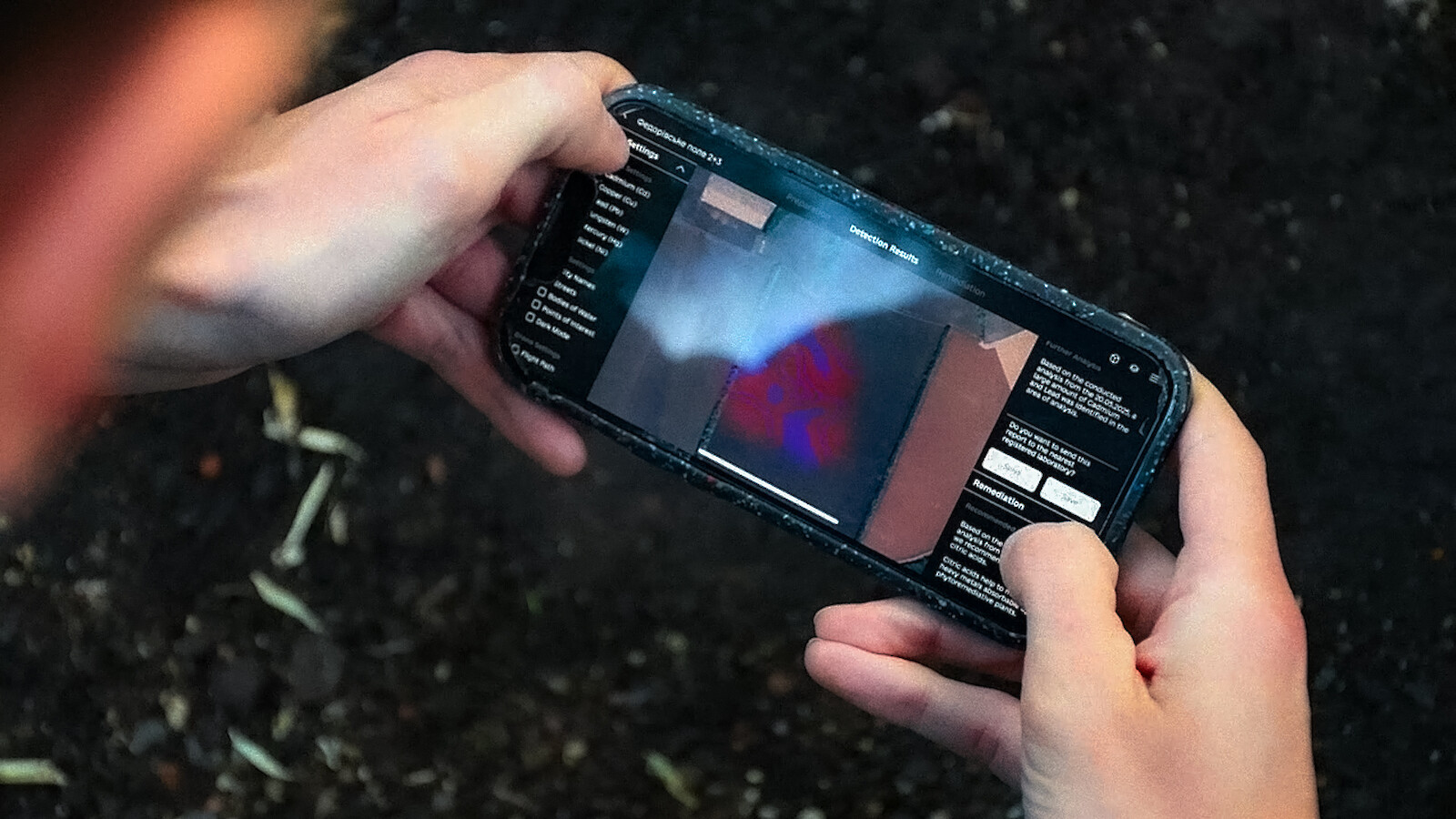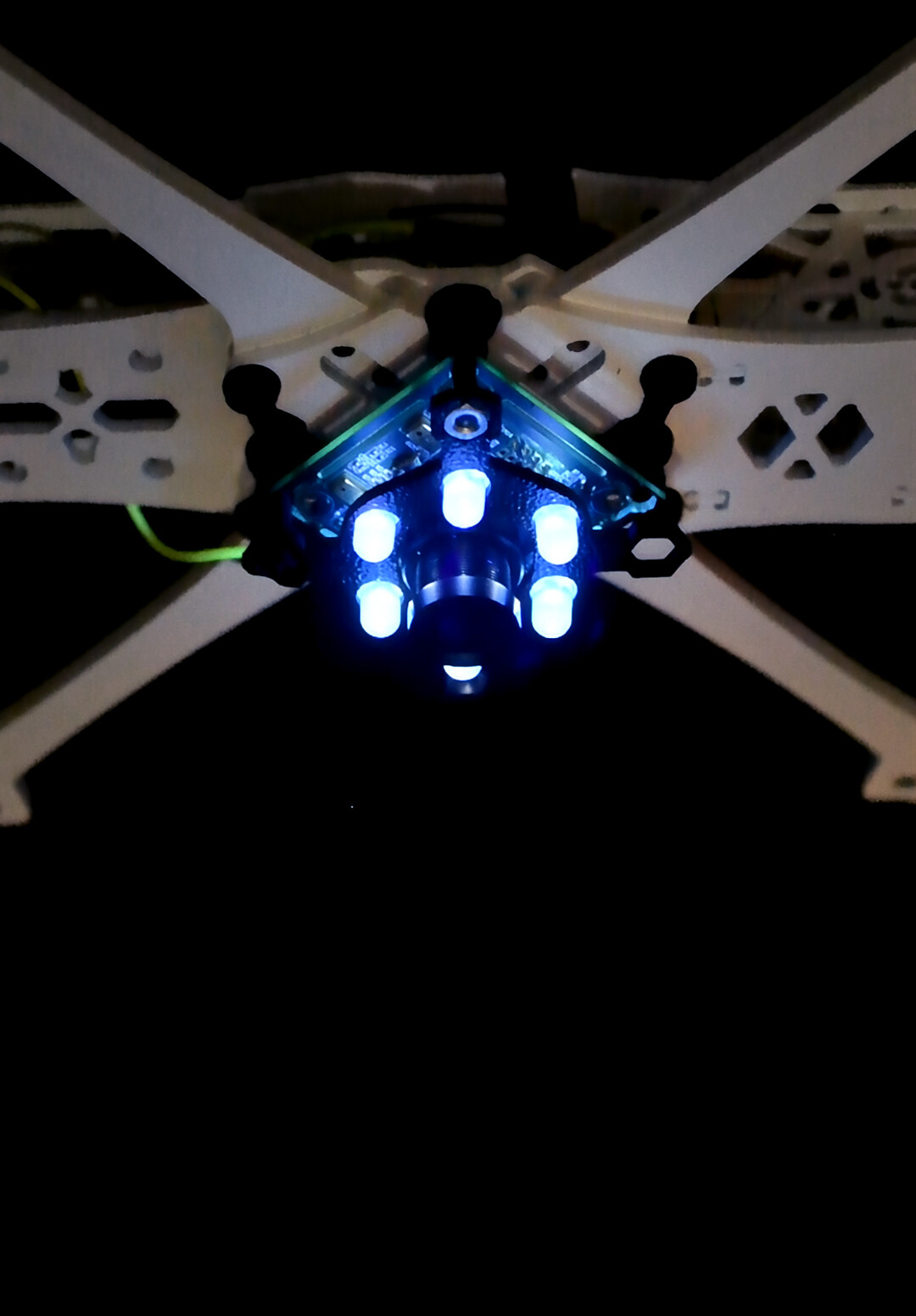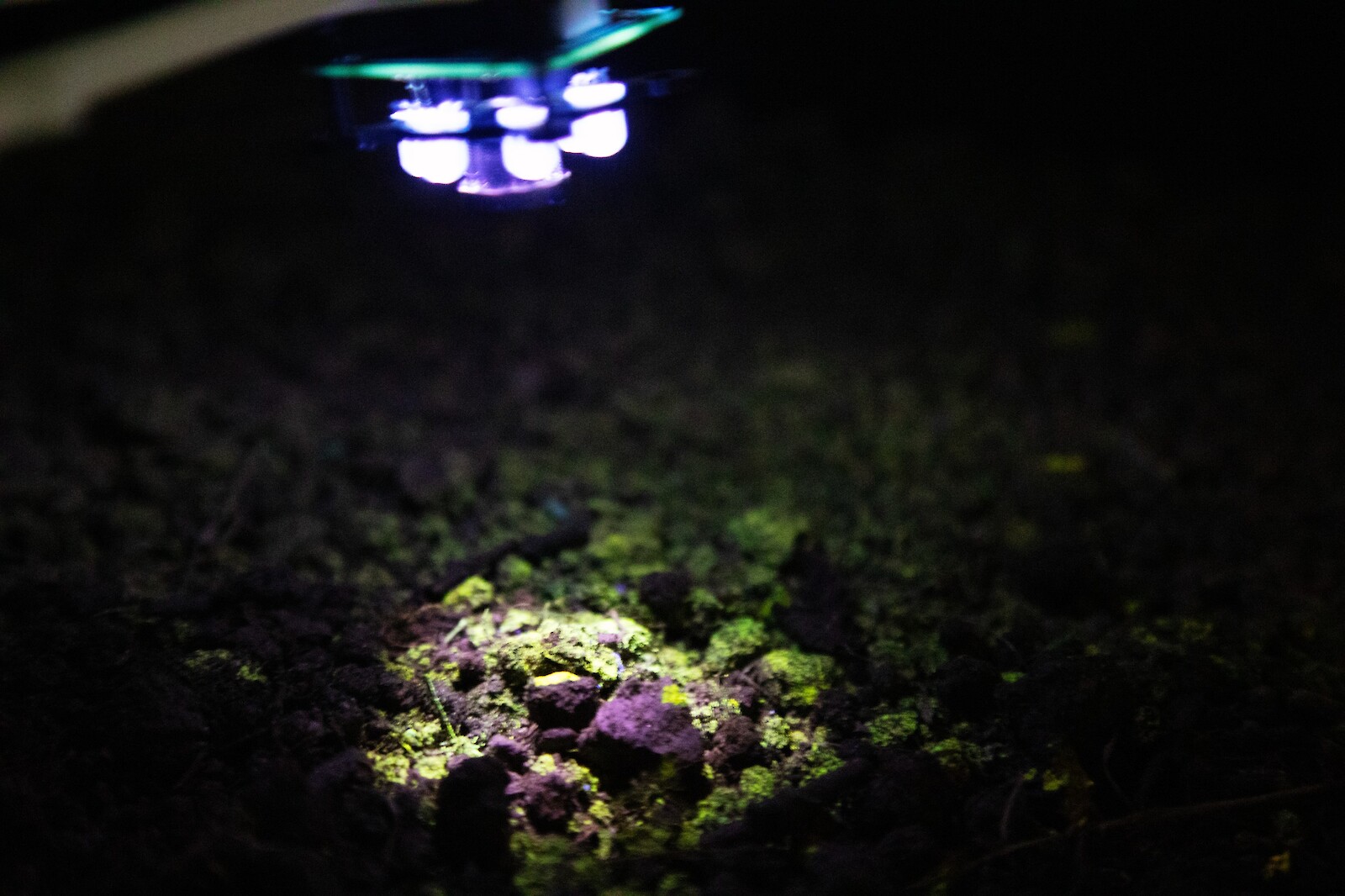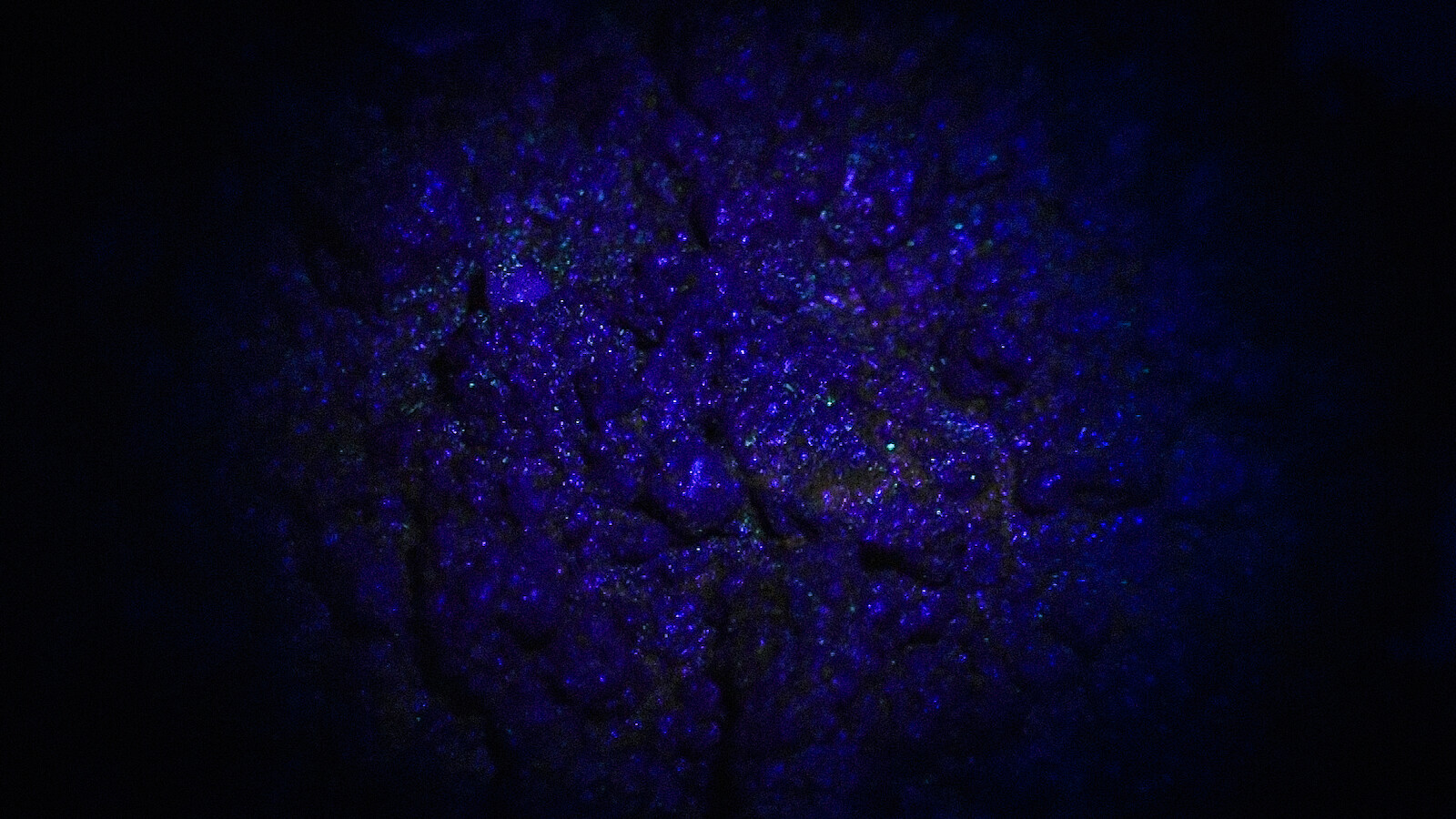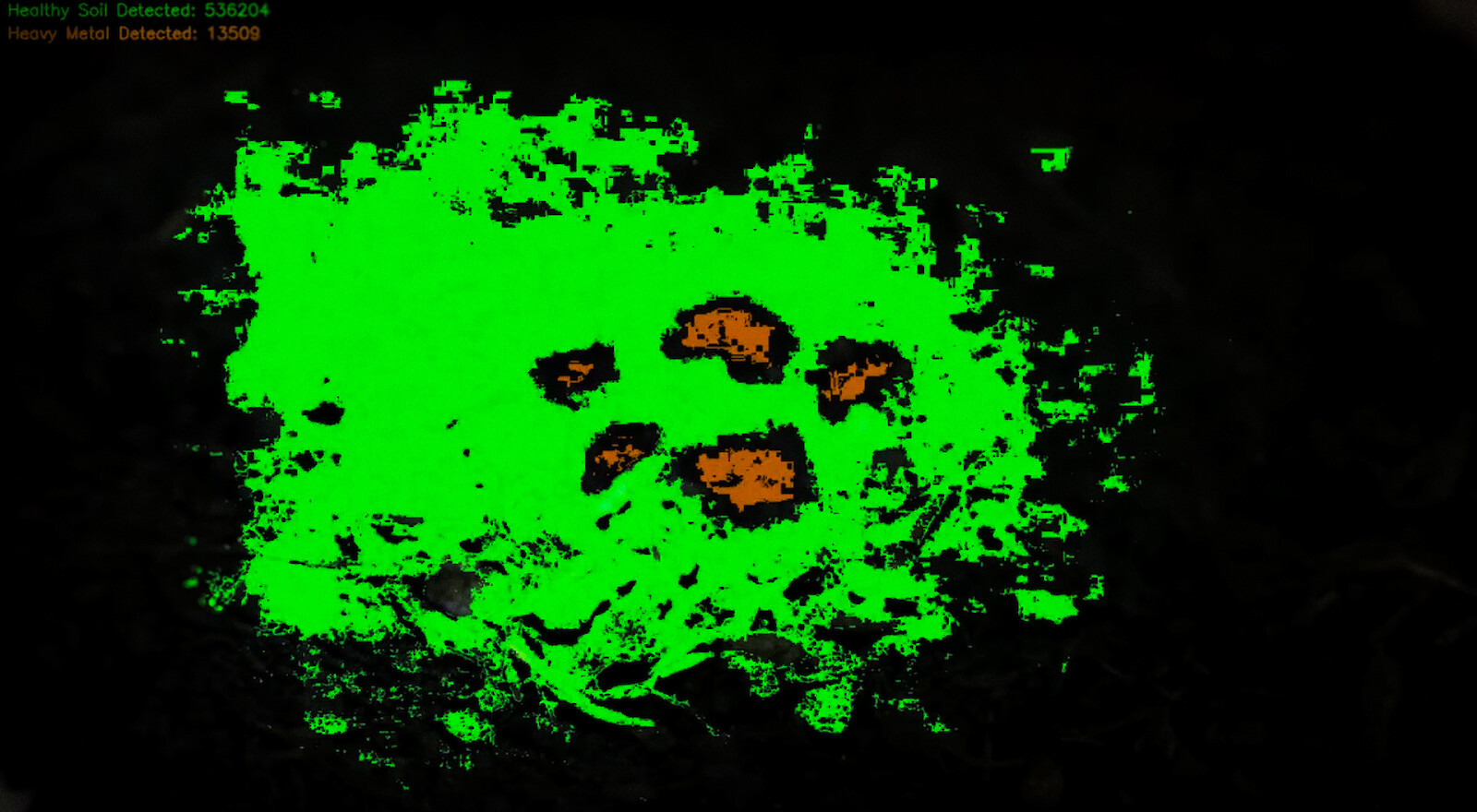CHORNOZEM to Represent IAD and ZHdK at Biodesign Challenge Summit 2025
With CHORNOZEM, MA Interaction Design students Kirill Kohl, Olivia Menezes, and Yaroslava Shylyk uncover one of the hidden yet most devastating consequences of war: the toxic heavy metals from munitions, fuel and explosives buried in Ukraine’s agricultural soils.
The project adopts a forensic logic to expose toxic hotspots in agricultural fields. The curcumin solution, that can be integrated into conventional fertilizers, fluoresces under UV light after contact with heavy metals. Combined with repurposed military drone imaging and computer vision, this allows farmers to detect contaminated hotspots for further analysis and targeted remediation,
Beyond enabling low-cost and accessible soil diagnostics, CHORNOZEM advocates for recognizing ecosystem destruction not as collateral damage but as a crime, emphasizing the urgent need to develop accessible and open-source tools for monitoring, protecting, and restoring damaged ecosystems.
The team will travel to New York City to present their work at the 10th annual Biodesign Challenge Summit from June 12 to 13 at Parsons School of Design and the Museum of Modern Art. They have also been selected for AgriFood Innovation Camp and will pitch at the New Food Summit this October.
We are very proud of their achievements and their profound contribution!
→ More on the project here
